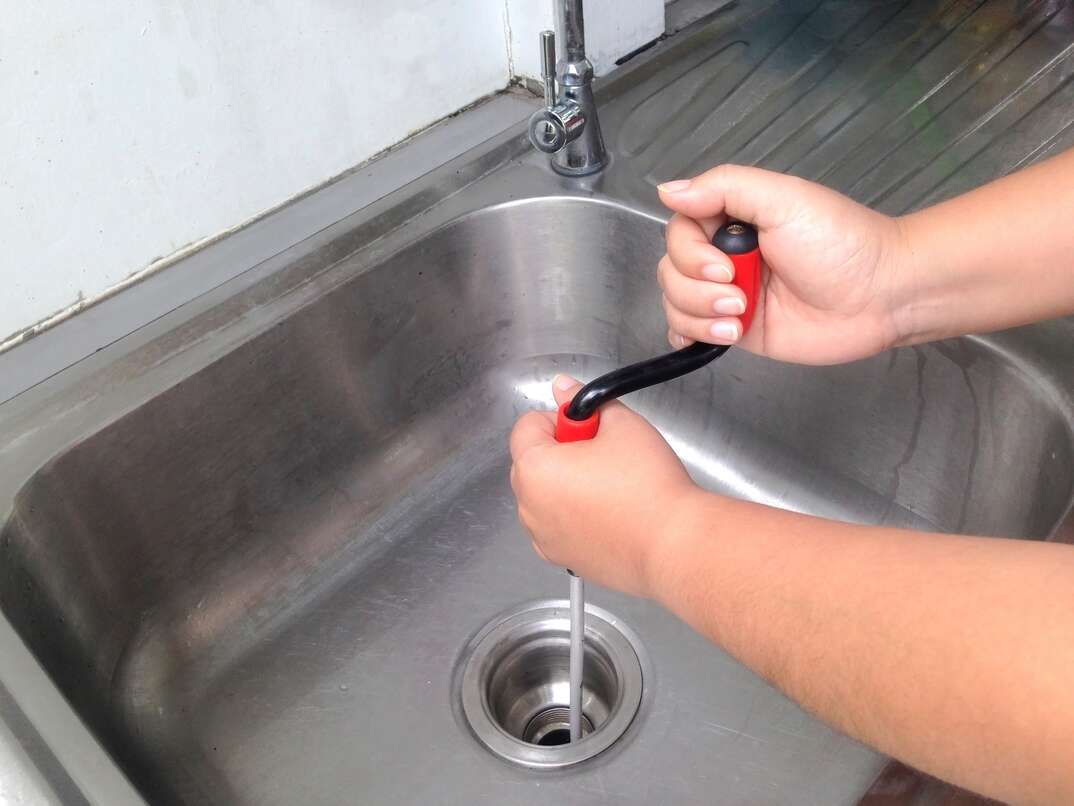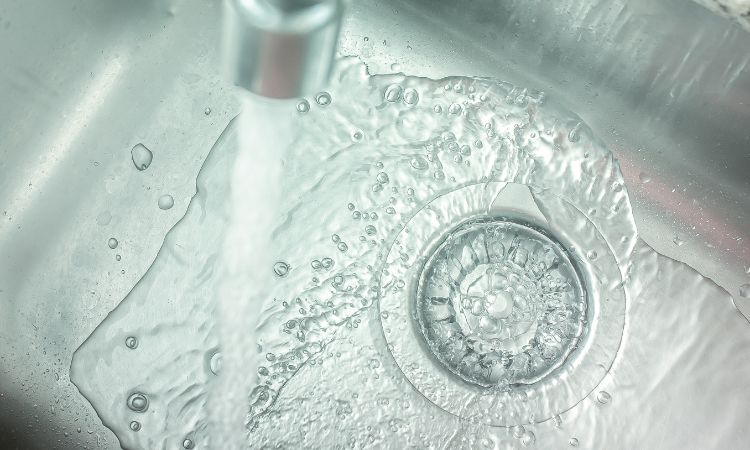Trusted Strategies For Repairing A Slow-Draining Sink
Trusted Strategies For Repairing A Slow-Draining Sink
Blog Article
This article below pertaining to 4 Tips to Fix a Slow Draining Sink is totally enlightening. Read on and draw your own personal findings.

Introduction
We have actually all existed: You're cleaning your teeth or cleaning your hands, and you see the water merging in the sink. Rather than quickly swirling down the drain, it sticks around, turning your once-refreshing early morning routine into a mini overload scene. A slow-draining sink isn't simply frustrating; it's commonly an indicator of larger plumbing concerns hiding below the surface area. The bright side is that most slow-draining sinks can be repaired with a little expertise, a few basic tools, and some perseverance. Ready to tackle this job head-on? Let's roll up our sleeves and dive right in.
Recognizing the Causes of a Slow-Draining Sink
Before you begin poking around in your pipes, it assists to recognize what could be triggering the stagnation. Understanding the source makes it easier to choose the best repair.
Typical Wrongdoers Behind Slow Water Drainage
So, what's clogging things up? Normally, it's a combination of everyday debris-- believe hair, soap residue, toothpaste deposit, and leftover food bits. In time, these tiny bits accumulate and hold on to the pipe walls, gradually tightening the passage and making it harder for water to pass through. In some cases, natural resource from difficult water can likewise contribute to the substance, developing the excellent storm for persistent blockages.
When is it Time to Do Something About It?
If you discover the water draining pipes slower than normal, it's a good idea to step in quicker rather than later on. Waiting as well long could lead to finish blockages, unpleasant smells, or perhaps pipe damages. If the water takes greater than a couple of seconds to clean out after shutting off the faucet, consider it a red flag and get ready to put on your do it yourself hat.
Tools and Materials You'll Need
The right devices make all the difference. Luckily, you won't need a completely stocked plumber's van to do the job.
Necessary Tools for DIY Services
A plunger is your best beginning factor. A small, sink-sized plunger produces suction that can displace small blockages. For more consistent blockages, a drainpipe snake (sometimes called a plumbing professional's auger) works marvels. A set of gloves, a flashlight, and possibly a pair of protective goggles are likewise handy.
Suggested Cleansing Solutions
Moderate recipe soap and hot water can assist break down greasy accumulation. A blend of baking soda and vinegar is a reliable natural home remedy, and chemical cleaners supply a more eco-friendly technique. Maintain chemical drain cleaners as a last hope, as they can be harsh on your pipes.
Safety And Security First: Precautions and Preparations
Before you launch into unclogging mode, consider safety and security. You're taking care of potentially unclean water and debris, so slip on a pair of handwear covers. If you're utilizing chemical cleaners, ensure the area is well-ventilated and follow the directions on the label.
Protective Equipment and Work Space Configuration
Put down some old towels or dustcloths around the sink location to capture dashes. Clear away any items that might enter your method, like soap dispensers or toothbrush owners. See to it you have excellent lighting-- grab a flashlight if required.
Step-by-Step Guide to Taking Care Of a Slow-Draining Sink
Now, allow's get into the nitty-gritty. This detailed procedure will certainly direct you via straightforward methods to restore your sink's water drainage.
Action 1: Remove and Tidy the Stopper
Usually, the stopper (that little plug you lower to block water) is the first offender. Remove it carefully and clean off any kind of hair or gunk trapped around its base. Rinse it extensively before putting it back in place.
Action 2: Utilize a Plunger to Dislodge Debris
Got that plunger ready? Placement it over the drainpipe and give it a few firm pumps. The concept is to create suction that can loosen up any kind of clog. If you see bits of particles drifting up, you get on the right track.
Action 3: Try a Drainpipe Serpent or Wire Wall Mount
If the bettor doesn't work, it's time to bring out the drainpipe snake. Gently feed it into the drainpipe and spin as you go. You may feel some resistance-- that's likely the blockage. Maintain turning and pulling until you remove the obstruction. If you don't have a drain snake, an aligned wire wall mount can operate in a pinch.
Tip 4: Apply a DIY Drain Cleanser
An all-natural cleaner made from baking soda and vinegar can break down recurring gunk. Put half a mug of baking soda into the drainpipe, followed by half a cup of vinegar. Let it fizz for about 15 minutes, then flush with hot water. This chemical reaction frequently does wonders for minor clogs.
Tip 5: Rebuild and Examine the Sink
Placed everything back with each other and run the tap. Does the water currently swirl down the tubes at a decent speed? If yes, give yourself a pat on the back. Otherwise, do not despair-- there are still a few even more tricks up your sleeve.
Different Approaches for Stubborn Clogs
Not all obstructions are developed equal. If your sink still rejects to comply, consider these alternative solutions.
Sodium Bicarbonate and Vinegar Method
We currently touched on this, yet it's worth keeping in mind once more. This gentle, environmentally friendly technique is safer than chemical cleansers and usually rather reliable.
Enzymatic Drainpipe Cleansers
Enzyme-based cleaners make use of natural microorganisms to absorb organic matter. They're an exceptional choice if you're wanting to stay clear of extreme chemicals. Just bear in mind, they may take a bit longer to work their magic.
Chemical Drain Cleaning Company: Advantages And Disadvantages
Chemical cleansers can blast through tough clogs fast, yet they're not without disadvantages. They can produce warmth and fumes, damages pipes if used exceedingly, and position environmental threats. Utilize them sparingly, and constantly adhere to the instructions carefully.
Preventive Measures to Maintain Your Sink Flowing
Prevention is the very best remedy. By embracing a couple of easy behaviors, you can maintain your sink from slowing down to begin with.
Regular Cleaning Practices
Wipe down the sink basin and component location routinely. Remove hair or food bits prior to they have an opportunity to wash down the drain.
Avoiding Harmful Materials Down the Drain
Think twice prior to discarding coffee grounds, grease, or coarse vegetable scraps down the sink. These culprits hold on to pipeline wall surfaces, creating clogs gradually.
Regular Upkeep Checks
Set up a quick monthly evaluation. Run warm water via the sink for a few minutes, focusing on the circulation. If it seems slow, act quickly prior to it becomes a full-blown obstruction.
When to Call an Expert Plumbing Technician
Sometimes, regardless of just how hard you attempt, that obstruct simply won't move. That's when it's time to generate the pros.
Indicators That Indicate a More Severe Concern
If your sink drains pipes gradually in spite of numerous efforts, or if you see water supporting in other fixtures (like your shower or commode), you may have a much more major pipes issue lurking deeper in the system.
Balancing DIY Initiatives with Specialist Assistance
While do it yourself can conserve you cash and use a feeling of achievement, there's no embarassment in calling a professional. A specialist plumbing professional can examine your whole pipes setup, ensuring there's no underlying damages or long-lasting trouble that might cost you much more later on.
Contrasting Expenses and Long-Term Solutions
Before making a decision, think about the big picture. An economical, quick fix may resolve the trouble briefly, but purchasing a much more long-term service might save you money and anxiety in the future.
Weighing the Expenses of Do It Yourself vs. Specialist Solutions
Do it yourself repairs typically set you back bit more than the cost of a plunger or a bottle of baking soda. Specialist solutions, on the other hand, featured a cost but may avoid repetitive issues and pricey repair services later.
Purchasing Top Quality Fixtures and Upgrades
If your sink's layout adds to constant clogs, it may be worth upgrading to higher-quality components or modifying the pipes format. Consider this a financial investment in your home's performance and convenience.
Conclusion
A slow-draining sink can feel like a minor inflammation, but it's usually a sign that your pipes requires a little tender loving care. By understanding the source, using the right devices and strategies, and devoting to straightforward safety nets, you can maintain your sink streaming easily. And when all else fails, never ever hesitate to hire an expert-- your home's plumbing deserves the investment in care and maintenance.
Three Common Ways to Fix a Slow Drain
Baking Soda Method
Boil a full pot of water. Measure out cup of baking soda and pour it down the drain. Then take cup of the magical cleansing substance known as white vinegar and drop that down there too. Allow the mixture to fizz in the drain for five minutes as the vinegar and baking soda combine. Now dump in that whole pot of boiling water. This combination of cleaning substances should clear out anything that is causing your sink to drain slowly. If it doesn t...
Zip-It
If the baking soda method doesn t clear out your drain, it may be because a significant amount of hair and/or other debris has collected there and you need to remove it. Purchase a Zip-It tool at any home improvement or hardware store and insert it into your drain. It will catch any collected hair or debris that s blocking the flow of water. Pull it out. If it s got a big clump of hair, etc. on the end, you ve probably got your culprit.
Drain Cleaner
If these methods don t work, there is the standard drain cleaner that you can also buy in a hardware store or even your local grocery store. It s better if you can use a household solution, but these drain cleaners often work in a pinch. They re very simple to use. You generally just dump them in your drain and wait. If even this method is not effective, it may be time to call the plumber.
https://www.mrrooter.com/oneida/about-us/blog/2017/july/three-common-ways-to-fix-a-slow-drain/

Do you really like more info about 4 Tips to Fix a Slow Draining Sink? Leave a remark further down. We will be glad to listen to your ideas about this blog posting. Hoping that you visit us again before long. Be sure to take the time to share this post if you appreciated it. Many thanks for going through it.
Click Here Report this page